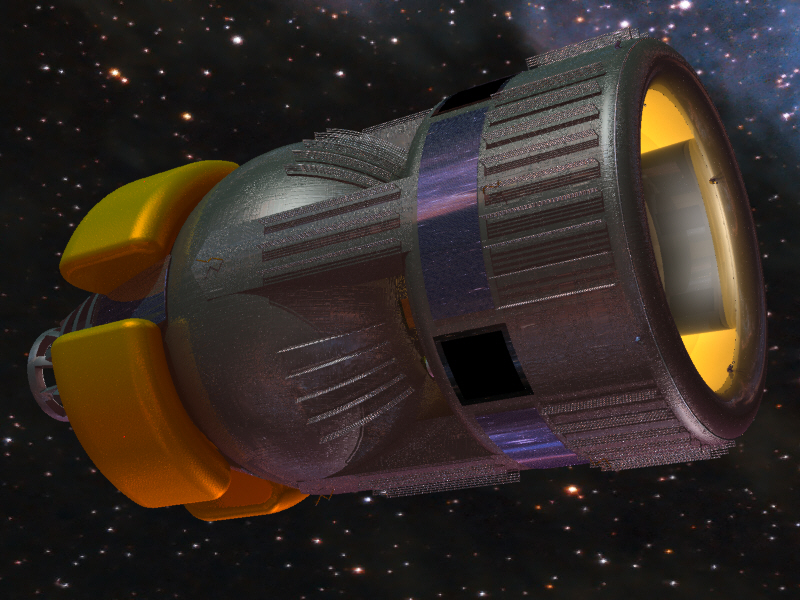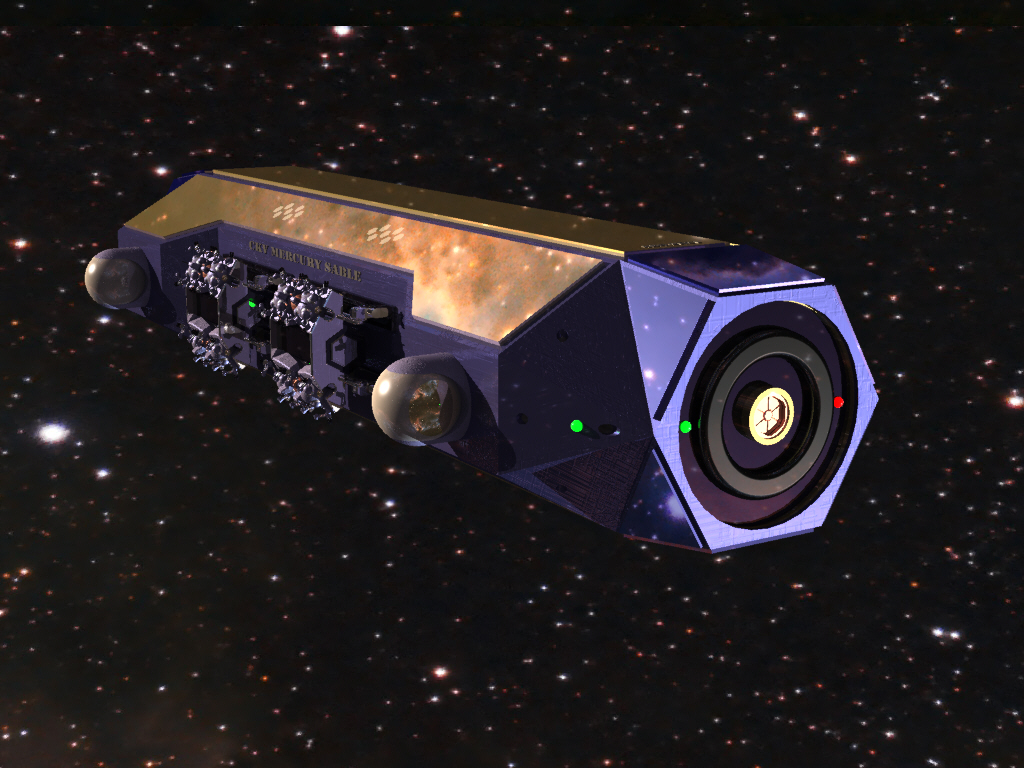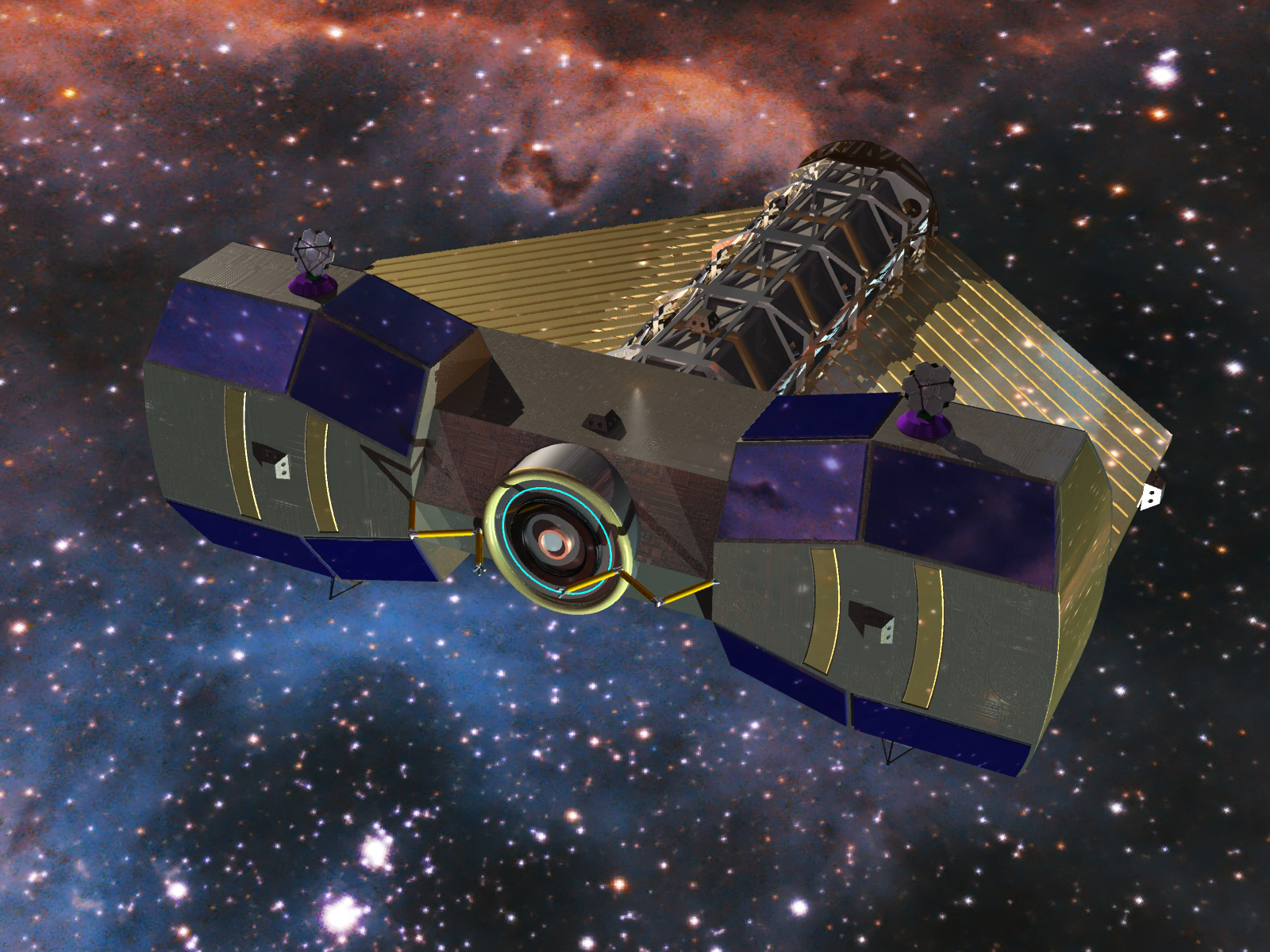Astronautical Terms for Cyber-Enhanced Pilots
Within the Cobalt Protectorate's sphere of influence, cybernetic augmentation is prevalent and is likely to become even moreso in response to the needs of the working public. Among pilots who possess brain-vehicle interfaces, the mapping of the human sensory and motor cortices to parts of a starship's systems has, alongside the popularity radial symmetry due to the need for spin gravity, caused a shift in the way in which ships and their elements are commonly discussed. In short, many terms with nautical origins have been either augmented or supplanted by those of anatomical origins.
A few examples of these terms and shifts in terminology include:
- Fore Rostral: Rostral systems are located in the forward extent of the vessel. Damage, gravitational, and magnettic sensors in this region are typically sensed through the neck and upper torso of the pilot. Optical and electromagnetic radiation sensor feeds are an exception to this rule, as these are typically conveyed directly into the pilot's visual cortex.
- Aft Caudal: Caudal systems are located in the aft extent of the vessel and often include reactor and drive systems. Damage, gravitational, and magnettic sensors in this region are typically sensed through the pilot's lower torso and pelvis - with the exception of drive systems, which typically correspond to the pilot's legs.
- Port/Starboard Left/Right Lateral (on orientable craft): In space, the direction of 'up' is subjective, generally pointing towards the direction of the craft's acceleration. Furthermore, the 'port' where a ship docks with another craft or space station is typically located towards the front of the ship, making old distinctions relating to the position of an imaginary sea port less meaningful to carreer spacers. As such, if a ship is not radially symmetric (i.e. belly landers, where the deck is 'orientable'), the terms 'port' and 'starboard' are usually replaced with 'left lateral' and 'right lateral' respectively. Damage, gravitational, and magnetic sensors in the left and right lateral regions of the vessel are typically sensed on the left and right sides of the pilot's torso.
- Port/Starboard (Angle) Radial (from Ventral): On radially symmetric craft - typically those with rotating habitat sections or which spin to create artificial gravity, such as the ESCI Revelation - the left, right, top, and bottom of the craft are entirely subjective. Instead, an arbitrary 'ventral' direction (see below) is assigned based on the first ordinal trunk address within the ship's rotating hull. Locations are discussed based on the angular distance they lie counterclockwise from the assigned ventral location. Negative angle values may be used for locations close to the assigned ventral location, and, indeed, many prefer this for simplicity's sake. The pilot may chose to assign the frame of reference for sensory inputs such that they are stationary relative to the assigned ventral direction or to a fixed direction relative to the ship's direction of travel, whatever is convenient at a given moment. For example, Knight-Airman Enzo Salt generally prefers to keep his sensoriate stationary relative to the galactic disc when piloting the Revelation, but switches to the rotating frame of refference when coordinating internal ship functions (i.e. damage control).
- Ventral/Distal: As with 'port' and 'starboard' (see above), the percieved 'top' and 'bottom' of a vessel might change due to acceleration or spin gravity. Nevertheless, when a ship is orientable (i.e. as a belly-lander), the 'ventral' and 'dorsal' sections of the vessel are percieved along the pilot's belly and back respectively.
- Medial: Medial locations on a starship are those which are closer to the 'core' of the vessel, whether located along the central axis of rotation or along the thrust vector. These typically represent important systems and habitable sections, as these locations provide the best protection from external hazards (i.e. radiation). The pilot of a ship typically feels sensory inputs from these systems inside their torso, with different systems often keyed to (relatively) comparable internal organs. It is important that these signals be carefully dampened so as to prevent discomfort, as most sentient beings don't like jarring sensations in what they percieve to be their vitals. Internal systems also feed information directly into the cortices relating to speech comprehension, reading comprehension, or (if optical) portions of the visual cortex. The ship's computer system itself, along with close peripherals, are sensed directly within the pilot's head and face despite their mediocentral location. The computer work's with the implant's multitasking functions to integrate all the information involved in a mission, such as frequencies of light beyond those visible to human eyes, into a form the pilot can use. 'User interface' elements, such as gauges, maps, and other displays, can be projected directly into the pilot's visual cortices.
- Distal: Distal locations on starships include anything mounted to the outside of the vessel, including manipulators, radiators, solar collectors, and cargo pods. Pilots typically recieve information from distal systems in the arms and (if propulsion-related) lower legs; subsystems, such as specific manipulator attachments, will be percieved in the digits. The multitasking augmentations found in pilot-vehicle interface implants are vital for the operation of distal systems especially, as there may otherwise be more manipulators than sensory or motor regions in the pilot's own brain to properly control them.
The CKV Mercury Sable is a good example of an orientable vessel. It holds its drone racks and multispectral scope pods along its left and right lateral surfaces. The ventral surface features auxiliary radiators and the bay doors into which new general purpose modules may be loaded, while the dorsal surface features more extensive radiators. The force docking array is located at the rostral extent of the vessel, while the fusion drive assembly is located at the caudal extent. Note the marker lights around the force docking array; these are concessions to civilian space law, where lights like these can help authorities determine the ship's orientation and angular velocity at a glance.
The ECV Frosty Maiden is a good example of a non-orientable spacecraft, as it features a habitation section that is provided with spin gravity when the whole ship spins around it's thrust axis. The drive assembly and docking array lie along the medial axis. The two arms of the habitable section are at 90 and 270 degrees radial from ventral; the ventral direction is only defined by the closed side of the saddle truss which contains the fuel and cargo GPMs, a fact which is usually only known by the regular crew of the vessel.
The ALV Pyre Dawn Is another good example of a non-orientable spacecraft. While it tumbles end-over-end to provide spin gravity for the crew, it is radially symmetric along its thrust axis. The small manipulators at the rostral end of the craft (around the force docking array) and the multi-spectral scope arrays atop the fuel pods are all distal to the ship's central axis.
The ECV Frosty Maiden is a good example of a non-orientable spacecraft, as it features a habitation section that is provided with spin gravity when the whole ship spins around it's thrust axis. The drive assembly and docking array lie along the medial axis. The two arms of the habitable section are at 90 and 270 degrees radial from ventral; the ventral direction is only defined by the closed side of the saddle truss which contains the fuel and cargo GPMs, a fact which is usually only known by the regular crew of the vessel.
The ALV Pyre Dawn Is another good example of a non-orientable spacecraft. While it tumbles end-over-end to provide spin gravity for the crew, it is radially symmetric along its thrust axis. The small manipulators at the rostral end of the craft (around the force docking array) and the multi-spectral scope arrays atop the fuel pods are all distal to the ship's central axis.







Comments